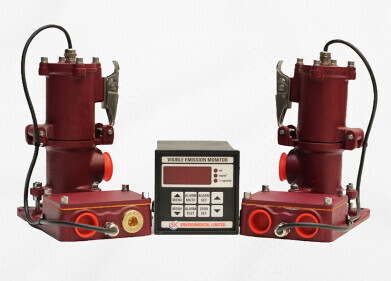Air Monitoring
Washington Valley Enters New Era of Air Monitoring
Nov 22 2015
There’s a Vietnamese idiom for idle chitchat which literally translates to English as “slicing the wind”. This delightful phrase is intended to conjure an image of the futility and pointlessness of attempting to dissect thin air, an ostensibly impossible task. However, that’s exactly what scientists are trying to do in a cluster of towns in the Yakima Valley in Washington, USA.
Two highly-sophisticated pieces of machinery have been installed atop the roof of Harrison Middle School in Sunnyside, as well as across a number of locations. Although the machines are intended to measure fundamentally the same thing (namely, particulate matter of a size 2.5 micrometres in diameter and smaller, or PM2.5), they go about their goal via differing methods.
A Joint Venture
The air monitoring initiative is the product of a collaboration between the Washington State Department of Ecology, who are supplying the devices, and the Yakima Regional Clean Air Agency, who will fund maintenance and provide backup support.
The first machine is known as the PM2.5 Nephelometer and collects real-time information that is almost instantaneously published on the Ecology Department’s website, thus allowing citizens of the valley or those with an interest in the topic to view the data freely. Meanwhile, the Federal Reference Method PM2.5 Sampler works in more concentrated bursts, amassing specific information in minute detail over 24-hour-periods (with a few days interval in between), which then undergoes further scrutiny and analysis in a laboratory.
A Twofold Approach
Similar projects have been put in place in the neighbouring towns of Yakima, White Swan and Toppenish, and the scattergun approach to collating air monitoring data (as opposed to the traditional central intelligence systems) represents a new phase in the way we think about air quality monitoring.
The project came about due to rising concerns about the deteriorating condition of air quality in the valley, especially during winter months. Though the Air Quality Index (AQI) for the valley currently meets health and safety standards, it’s thought that the increased amount of wood burned through the colder season leads to elevated levels of smoke and PM2.5 in the atmosphere.
For their part, the Agency have attempted to curb rising pollution levels by highlighting the importance of clean combustion when using wood-burning stoves, as well as the gradual phasing out of environmentally-unfriendly home heating techniques.
Air Monitoring in Industry
While the new project in the Yakima Valley is focused on the effects of home energy use on the environment and the cleanliness of the air we breathe, perhaps a bigger offender on the pollution front is big business and industry. In particular, factories, plants and industrial complexes are responsible for spitting out vast quantities of gases and by-products.
As such, it’s imperative that the monitoring of particulate emissions in an industrial setting – with particular regard to wet stack emissions – is retained as a priority by these companies. The cleanliness of the air we breathe depends heavily upon it.
Digital Edition
IET 34.2 March 2024
April 2024
Gas Detection - Biogas batch fermentation system for laboratory use with automatic gas analysis in real time Water/Wastewater - Upcycling sensors for sustainable nature management - Prist...
View all digital editions
Events
May 13 2024 Munich, Germany
May 15 2024 Lund, Sweden
May 15 2024 Frankurt-am-Main, Germany
May 20 2024 Columbus, OH, USA
May 21 2024 Lagos, Nigeria


















